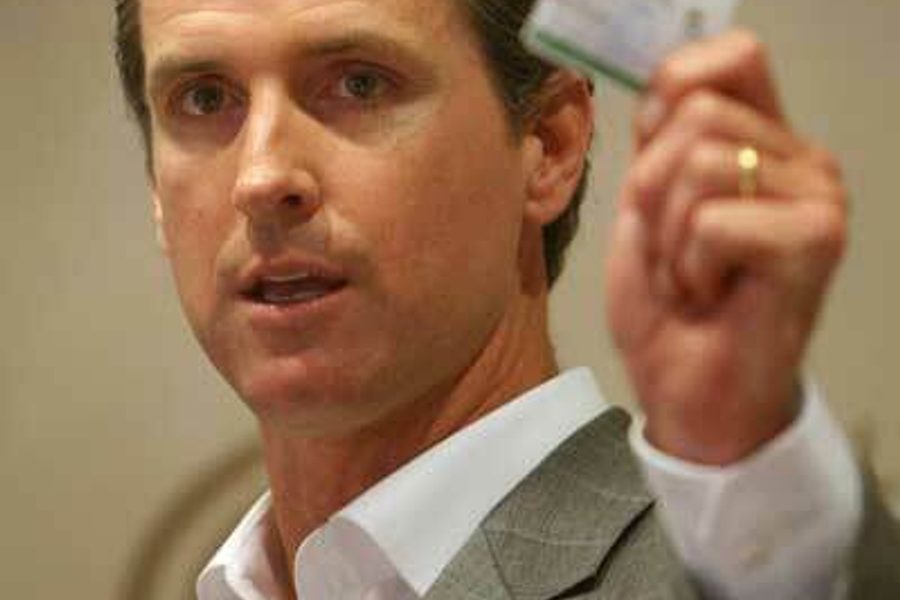
While the debate continues to rage over the public option and how much President Obama’s administration is committed to it, labor leaders and a former Bush economic adviser, William Dow, are pointing to the success of San Francisco’s Healthy San Francisco experiment.
While not technically insurance, the program provides subsidized care to San Francisco residents at approved clinics and hospitals – and pays for it with a small, graduated tax on employers.
And guess what? Businesses haven’t lost jobs as a result, and private insurance companies are still flourishing. (And, of course, it doesn’t kill grandma, either – or endanger taxpayers and citizens in any of the bogus ways fear-mongers on the right are screaming about at town halls or on Fox News.)
Even as President Obama used his Web and radio address this weekend to challenge myths about his proposed plan, there were some emerging signs Sunday that Senate Democrats were toughening their resolve to push through a health plan with a public option – by using the budget reconciliation tactic needing only 51 votes to pass reform. It certainly seems the push-back by progressives and unions against the administration’s wavering on the public option may be having some impact.
So the San Francisco experience becomes even more important as a potential guide to what could happen at a national level.
As Dow and two other health experts described the system in an op-ed they wrote last week in The New York Times:
Today, almost all residents in the city have affordable access to a comprehensive health care delivery system through the Healthy San Francisco program. Covered services include the use of a so-called “medical home” that coordinates care at approved clinics and hospitals within San Francisco, with both public and private facilities. Although not formally insurance, the program is tantamount to a public option of comprehensive health insurance, with the caveat that services are covered only in the city of San Francisco. Enrollees with incomes under 300 percent of the federal poverty level have heavily subsidized access, and those with higher incomes may buy into the public program at rates substantially lower than what they would pay for an individual policy in the private-insurance market.
To pay for this, San Francisco put into effect an employer-health-spending requirement, akin to the “pay or play” employer insurance mandates being considered in Congress.
Healthy San Francisco began in 2007 as a result of initiatives by Mayor Gavin Newsom and former Supervisor Tom Ammiano, now a state assemblyman. The program, while not insurance, provides more affordable healthcare options for uninsured residents through a network of local hospitals and clinics, the local newswire, Bay City News, reported.
More than 45,000 of the estimated 60,000 uninsured city residents have since signed up for the program, according to the San Francisco Department of Public Health.
And at a press conference last week, Mayor Gavin Newsom was joined by AFL-CIO president John Sweeney and other leaders to praise the plan. As Bay City News reported:
Newsom was joined at a City Hall news conference this morning by national AFL-CIO President John Sweeney and California Labor Federation Executive Secretary-Treasurer Art Pulaski in an effort, they said, to tout San Francisco’s program as a model for national health care reform.
Newsom drew a parallel to the national debate by emphasizing Healthy San Francisco was a “public option” and “a strategy to provide health care, regardless of your ability to pay, regardless of preexisting conditions.”
Pulaski called Healthy San Francisco “an unqualified success” and “an example of why the public option is a necessity.” He added that recent cuts in state health programs were “going in the wrong direction.”
“What you have here with Healthy San Francisco, is where we want to go,” Sweeney said, calling the program “a really terrific public health care option.”
Sweeney said he’s been directly involved in the national health care reform effort.
“The next 30 days will go a long way to determine who wins this battle,” Sweeney said.
“If we fail to act,” he said, insurance premiums will increase, benefits will be further cut, and millions will go without insurance.
“The bottom line is people have to realize, it’s us against the giant insurance companies,” Sweeney said.
The question remains, of course, whether Congress will look to the San Francisco approach and listen to the majority of the public seeking health reform. Or will they bow to the pressure of right-wing pundits, lavish campaign donations and the “astro-turf” lobbying and Town Hall fanatics ginned up by the insurance companies?






